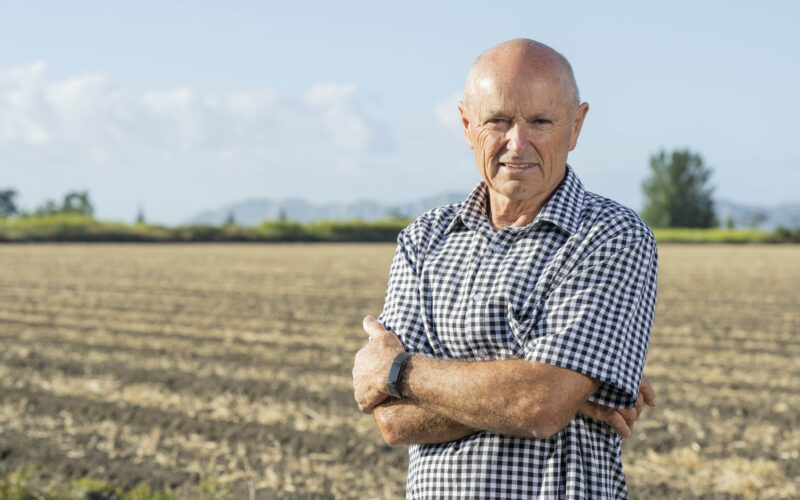The sense of belonging among European and Māori alike to Tairāwhiti, already strong prior to events of the past two years, has only strengthened since Cyclone Gabrielle laid waste to forest, crops and farmland a year ago.
“If anything would prompt people to leave here, they would have been gone by now. They are here for a reason, they want to be here, and they are committed to staying here,” said long time farm adviser Peter Andrew of AgFirst.
He has overseen many clients, both iwi and European, as they have grappled with the challenges of recovery from Gabrielle over the past year.
For some it has been even longer, given the severe weather events experienced before Gabrielle.
Gabrielle is what put Tairāwhiti on the map, but Andrew knows better than most that the cyclone was only an untimely exclamation point amid many months of foul weather language. The region had endured a full year’s wretched weather even before Gabrielle came knocking, and for most that weather continued until well into late spring last year.
In recent weeks the sun has finally come out, shrugging off La Niña’s gloom to ripen crops, dry soaked land, and welcome holidaymakers back to a true Tairāwhiti summer.
“This has been a big test of people’s resilience, and to get stuff done.
“And if a war should ever break out, I would take an army of Gisborne and Hawke’s Bay farmers with me.”
Despite their stoicism, however, Andrew acknowledges the huge mental toll the past 24-plus months have taken upon them.
“But the good thing is the number of community groups there to bounce things off.”
He believes farmers are always more at ease talking to the people they see and trust every day, the stock agent, the vet, the farm adviser, than they are to some well-intentioned but ultimately unfamiliar counsellor.
“I do have clients who have unloaded on me. But they also recognise there are some really good things about farming, being with their animals, out with their dogs on the land, and learning to celebrate the small wins.”
Those ‘small wins’ may be as simple as fixing the broken gate post that one passes every morning.
“You do get the ones who will say ‘I am over this bullsh*t.’ But usually, they cannot exit because they owe too much, and land prices are in no-man’s land at present.”
Stress levels remain high in rural areas, and it can be easy for an outside visitor to make a comment in jest that is taken the wrong way.
For many farmers inland from the coast, the ongoing wet weather through to late spring means it has taken until summer to fully access and appreciate the work that needs to be done on races, waterlines and fences.
“Guys that were rally badly munted would only be 50% of the way back. They are spending more, earning less and interest rates are up.”
Some had to sell their stock at fire-sale prices after Gabrielle, simply to get them off their damaged properties.
Beyond the farm gate, roading infrastructure is the most frustrating factor affecting most communities.
Andrew is concerned central government attention is waning and funding opportunities have been lost as a result.
He points to the Mangatokerau bridge on Tolaga Bay’s Paroa Road, which gained notoriety for the high-profile photo with tonnes of logs, a boat and a container piled against its flanks.
“That bridge is still not fixed. It’s not seen as a priority but it’s cost a client of mine $100,000 in extra costs.
“Forestry operators could have fixed that bridge in two days. I have showed it to ministers but it’s been a year, and nothing has changed.”
While land use change has been much talked about, Andrew is reserved about the benefits a return to more native plantings would deliver.
Expense in establishment and difficulties in getting people to maintain the plantings for years ahead are two issues, but deer incursion is by far and away the biggest headache.
“People are on board with the idea, but deer will really strip it all back.”
Were government funding to be made available to facilitate planting of a range of species, both exotic and native, including redwoods, redgum and poplar, he believes landowners would take it up, establishing small, manageable woodlots.
“We need those alternative species. You are not going to sell many pines to farmers out here, for lots of reasons.”
In Focus podcast | 9 February
Valentine’s Day marks one year since Cyclone Gabrielle ripped through the eastern North island. Farmers, growers and communities faced a massive recovery as they worked to rebuild infrastructure, supply chains and get the land back into productive shape.
For this week’s show, I sat down with Rod Vowles, who farms just east of Waipawa a few kilometres from the Tukituki River. His story of survival is astonishing.
Then, Karen Morrish from Apples and Pears NZ to see how Hawke’s Bay growers are faring as the harvest gets under way.
And, Federated Farmers national board member Sandra Faulkner shares how Tairāwhiti farmers are getting on up the coast.






